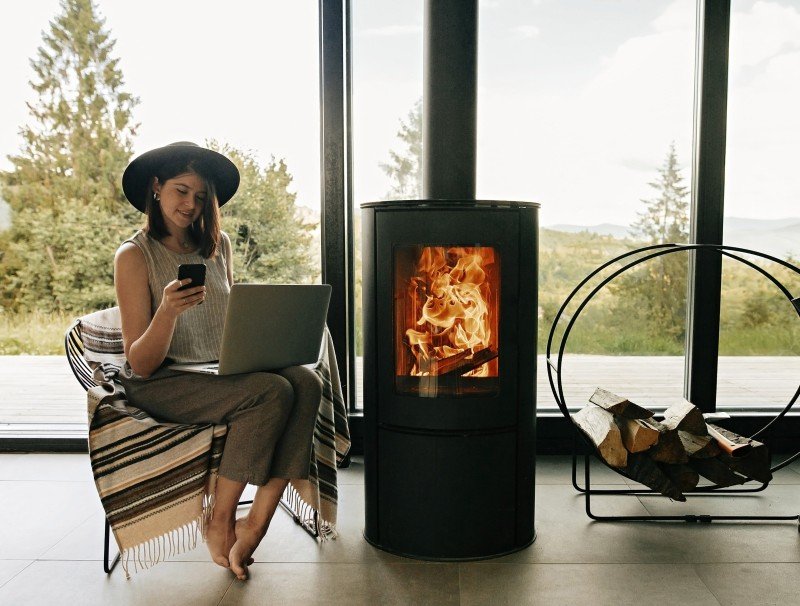The 10 Most Scariest Things About Best Buy Fireplace Heater
Finding the Perfect Fireplace to Buy: A Comprehensive Guide
Fireplaces have long been a symbol of heat, comfort, and home. Today, they serve not only as functional heating sources however likewise as striking style elements that raise the visual of any living area. With the proliferation of styles, fuels, and technological features, buying a fireplace can feel challenging. In this guide, we will check out numerous kinds of fireplaces, the factors to consider for acquiring, and the advantages of having one in your home.
Types of Fireplaces
Before diving into how to pick the best fireplace, it's vital to understand the various types offered on the market. Below is a detailed contrast table of the most common kinds of fireplaces:
Type
Fuel Source
Setup
Upkeep Needs
Normal Cost Range
Wood-Burning
Wood
Requires chimney
High; routine cleaning
₤ 2,500 – ₤ 5,000
Gas Fireplace
Gas or propane
Vented or ventless
Medium; annual examination
₤ 1,500 – ₤ 4,000
Electric Fireplace
Electrical power
Plug-in or built-in
Low; periodic cleaning
₤ 200 – ₤ 3,500
Pellet Stove
Wood pellets
Requires venting
Medium; regular cleansing
₤ 2,000 – ₤ 4,000
Ethanol Fireplace
Bioethanol
No venting needed
Extremely low; tidy glass regularly
₤ 300 – ₤ 2,500
1. Wood-Burning Fireplaces
Wood-burning fireplaces are the traditional option, stimulating a standard atmosphere. Nevertheless, they need correct chimney installation and upkeep to guarantee safety. The cost can be on the greater side due to these demands.
2. Gas Fireplaces
Gas fireplaces use benefit and efficiency. They can be vented or ventless, depending on your space. While gas choices tend to be costlier upfront, they generally require less upkeep than wood-burning designs.
3. Electric Fireplaces
Electric fireplaces are versatile and can be positioned throughout the home, as they only need a power outlet. They can quickly function as a supplemental heating source and come in numerous styles, from wall-mounted to freestanding units.
4. Pellet Stoves
Pellet ranges burn compressed pellets made from wood and other products. They need a power supply for operation and normally have a greater initial expense but offer great fuel effectiveness and ease of usage.
5. Ethanol Fireplaces
Ethanol fireplaces are modern and stylish, working without a chimney. They offer a clean-burning choice for those who value aesthetics over heat output. Nevertheless, Fireplaces And Stove may not appropriate for heating bigger areas.
Key Considerations When Purchasing a Fireplace
When deciding on a fireplace, think about the list below factors:
1. Home Size and Layout
- Open Spaces: Large open locations gain from powerful units like wood or pellet ranges.
- Smaller sized Rooms: Electric or ethanol models may be sufficient for intimate areas.
2. Fuel Source
- Pick based upon availability to fuel types (wood, gas, electric) and your way of life (maintenance, benefit).
3. Heating Needs
- Identify the heating requirements for your area. Larger fireplaces may be required for larger spaces.
4. Regional Regulations
- Guarantee your fireplace abides by regional building regulations and regulations, as some districts might impose constraints on certain types.
5. Visual Appeal
- Select a style and surface that complements your home design, whether it's standard, contemporary, or rustic.
Advantages of Having a Fireplace
The benefits of having a fireplace in your house are various. Here are some key benefits:
- Comfort and Coziness: Fireplaces develop a warm environment, perfect for events or serene evenings.
- Increased Property Value: A well-placed and functional fireplace can boost your home's market value.
- Alternative Heating Source: Fireplaces offer supplemental heating during winter season, which can help lower heating costs.
- Aesthetic Centerpiece: Fireplaces frequently work as the centerpiece in a space, including character and elegance to the home.
FAQ Section
Q1: How do I determine the very best fireplace for my home?
A: Assess your heating requirements, area size, chosen fuel source, and visual choices to choose the best choice.
Q2: Are gas fireplaces more secure than wood-burning ones?
A: Gas fireplaces typically have fewer security issues due to their regulated combustion and much easier upkeep, but appropriate setup is still important.
Q3: Can I set up a fireplace myself?
A: While electrical fireplaces appropriate for DIY installation, gas, and wood-burning designs require professional setup to ensure security and compliance with local codes.
Q4: What is the upkeep required for each type of fireplace?
A:
- Wood: Regular cleaning of ash and creosote from chimneys.
- Gas: Annual check-up to check venting and connections.
- Electric: Dusting and inspecting for electrical problems.
- Pellet: Cleaning out pellets and ash occasionally.
- Ethanol: Simple cleaning of the burner and glass.
Q5: How much will my heating costs increase with the addition of a fireplace?
A: This can differ considerably. Fireplaces generally provide supplementary heating and may reduce your total costs, but specifics depend on usage and insulation.
Selecting the ideal fireplace to buy involves understanding your home's needs and personal preferences. Whether you select the traditional beauty of a wood-burning fireplace or the contemporary convenience of an electric system, there's a fireplace that can fit effortlessly into your home. By thinking about the numerous types, setup requirements, and benefits talked about in this guide, you're fully equipped to make an educated choice and enjoy the heat and design that a fireplace can bring to your living environment. Happy fireplace shopping!
